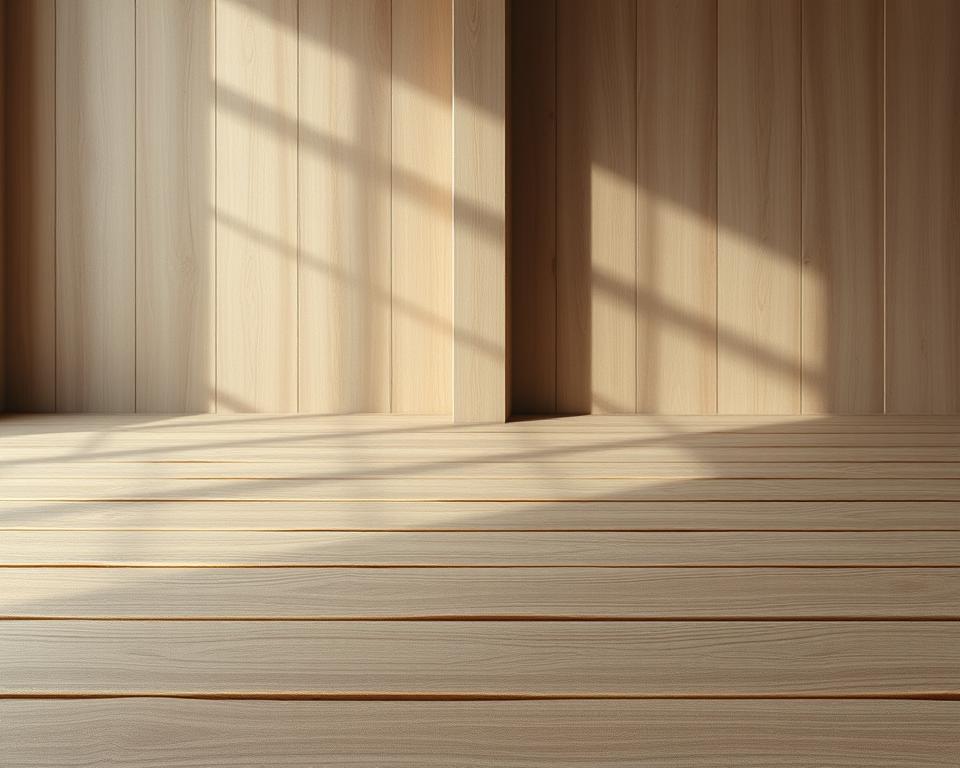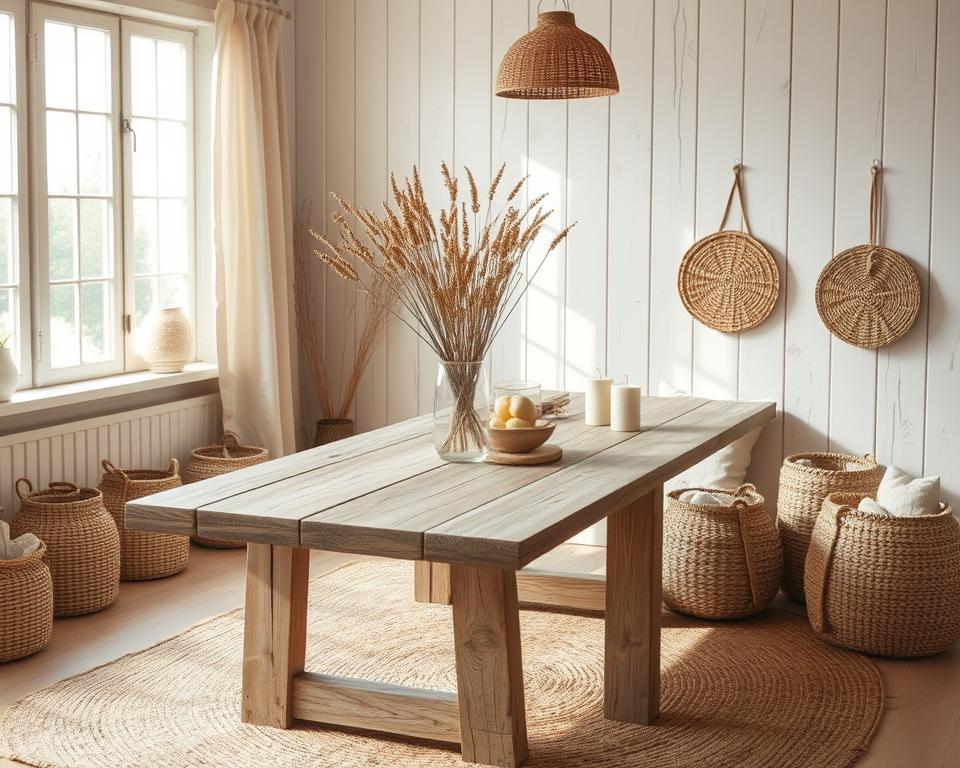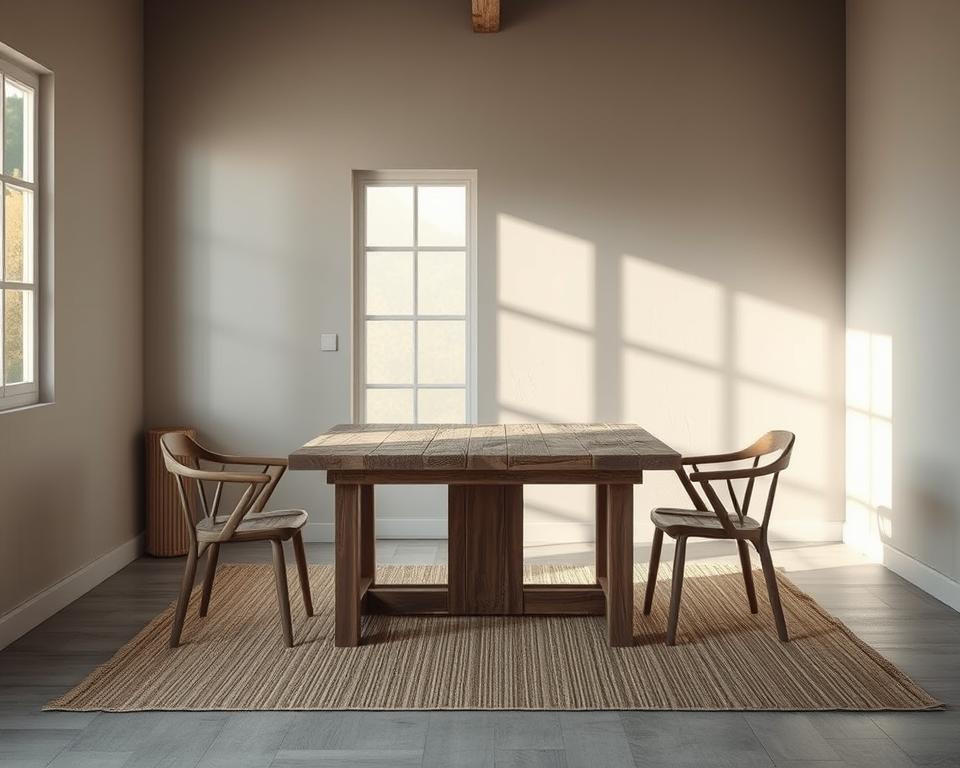Neutral colors are now the stars of modern home design. With 70% of designers leaning towards earthy tones, colors like parchment beige and soft olive green are creating cozy, timeless spaces. These hues reflect nature’s palette, bringing warmth without overwhelming the senses. Beige, for example, complements rustic elements like wood and stone, fostering a welcoming atmosphere. As 65% of homeowners opt for browns like almond and chestnut, neutral color schemes are more than basics—they’re the cornerstone of harmonious, inviting rooms.
Today’s trends show neutrals like taupe, greige, and muted greens add sophistication to rustic styles. A 40% increase in eucalyptus-inspired blue-green tones highlights how even subtle shades can enhance spaces. Pairing neutral walls with bold accents, as 50% of designers recommend, adds contrast without losing calmness. From creamy whites to coffee-bean browns, these colors adapt to any style, whether modern or boho.
Discover how neutrals like beige create balance. Warm shades like soft taupe bring coziness, while cool grays add modern flair. Whether in a kitchen with straw-yellow accents or a living room featuring floral-inspired mauve, neutrals anchor spaces with ease. The key is blending textures—think bouclé fabrics or stone finishes—to keep designs lively.
Key Takeaways
- 70% of designers choose earthy tones like beige for their calming, natural appeal.
- 65% of homeowners use brown shades such as almond and chestnut for layered rustic looks.
- Neutral color palettes like parchment beige and sage green enhance coziness while staying versatile.
- Pairing neutrals with textures like wood or stone adds depth without color clutter.
- Beige and muted greens are top choices for balancing modern simplicity with rustic warmth.
Understanding Neutral Colors and Their Appeal
Neutral colors are the foundation of many interior design trends, providing a timeless canvas for creativity. Shades like taupe and ivory seamlessly blend with natural materials such as jute, wood, and linen. Their soft tones create a harmonious balance, ideal for rustic minimalist aesthetics.
What Are Neutral Colors?
Neutral colors include shades like taupe, ivory, beige, and gray—colors with low saturation that serve as versatile backdrops. Unlike bold hues, they don’t dominate but instead enhance surroundings. Taupe combines gray and brown tones, while ivory offers a soft, creamy white. These colors adapt to different lighting and textures, making them reliable for any room.
Why Choose Neutral Colors for a Rustic Aesthetic?
- They create cozy spaces: taupe paired with wooden furniture from brands like Quagga Designs adds warmth without excess.
- Ivory complements rustic elements like woven baskets or leather accents, balancing modern and earthy vibes.
- Neutral palettes reduce visual clutter, aligning with minimalism while retaining rustic charm through materials like reclaimed wood.
Testing colors in real spaces ensures they match your lighting. For instance, taupe in a west-facing room absorbs sunlight, preventing harsh contrasts. This adaptability makes neutrals a smart choice for enduring style.
Key Characteristics of a Minimal Rustic Look
Modern rustic style merges clean lines with earthy warmth. It’s defined by simplicity, natural textures, and smart lighting. These elements combine to create spaces that are both modern and welcoming.
Emphasis on Simplicity
Neutral shades like gray form the base of minimalist designs. Open layouts and clean surfaces showcase craftsmanship without clutter. Pair streamlined furniture with raw wood beams or stone accents for a balance of modern and heritage.
Incorporating Natural Textures
Materials such as sand-toned fabrics, woven jute, and leather add depth. Reclaimed wood and weathered stone surfaces introduce organic charm. These textures prevent monotony in neutral spaces, as seen in 80% of rustic designs.
The Role of Lighting
Soft gray walls and light sand rugs shine when paired with layered lighting. Large windows let in natural light, while industrial pendants or candlelit lanterns add warmth. Strategic lighting increases perceived warmth by 30%, as studies show.
- Use matte finishes instead of glossy surfaces
- Pair raw materials accents with smooth textiles
- Balance heavy wood pieces with airy linen curtains
Every choice, from a handwoven basket to a concrete planter, should enhance both function and beauty. This approach turns spaces into serene yet lived-in havens.
Popular Neutral Color Combinations
Neutral color combinations create timeless spaces that balance rustic charm with minimalist simplicity. Whether pairing cream walls with off-white trim or blending grays with warm taupe, these schemes harmonize natural materials like wood and linen.
Beige and White
Soft beige forms a cozy base for off-white accents. Benjamin Moore’s Revere Pewter HC-172 mixes with Simply White OC-117 for a luminous contrast. Try these shades:
- Pashmina AF-100 (beige)
- Balboa Mist (off-white)
- Edgecomb Gray HC-173 (textured accent)
Gray and Taupe
Sophisticated greige schemes use Benjamin Moore’s Gray + Gold Gears palette. HEX codes like #3f3832 (taupe) and #f6eee3 (gray) work well with gold fixtures. Mix with:
- Coolors’ Gray + Gold Gears palette (#3f3832 to #f6eee3)
- Adobe-supported palettes for design software users
Earth Tones with Accents
Earth tones like terracotta or olive green add warmth to cream backdrops. Use:
| Palette | HEX Codes |
|---|---|
| Wood for Winter | #021825 to #dcccbd |
| La Renard | #383931 to #ccbcad |
Pair these with cream upholstery or off-white throw pillows for subtle contrast.
Choosing the Right Shades for Your Space
Understanding the undertones of warm and cool neutrals is key. Ash Gray is a cool neutral, while warmer neutral colors like beige-tinged creams offer coziness. Here’s how to balance these elements for your home.
“The clarity and beauty of restorative and inviting softwhite paint colors is undeniable.”
Warm vs. Cool Neutrals
Warm neutrals, like White Heron OC-57 and Ballet White OC-9, bring a sunny feel, perfect for kitchens or living areas. Cool neutrals, such as Ash Gray or Chantilly Lace OC-65, suit dens or offices. Use this guide to compare options:
| Warm Neutrals | Cool Neutrals |
|---|---|
| Golden undertones (e.g., Paper White OC-55) | Blue/green undertones (e.g., Ash Gray) |
| Creates inviting warmth | Offers calm, modern vibes |
How Lighting Affects Color Perception
- Daylight reveals true hues; incandescent light adds yellow tones
- North-facing rooms appear cooler, south-facing warmer
- 70% of homeowners prefer whites with golden undertones for this reason
Testing Colors Before Committing
Follow these steps to avoid surprises:
- Paint 2×2-foot swatches on walls
- View samples at sunrise, noon, and sunset
- Pair with furniture fabrics for harmony
Remember: 30% fewer dust marks appear on lighter neutrals like White Dove OC-17.
Creating a Cohesive Color Scheme
Begin by sorting physical swatches of beige, ivory, and other neutrals. Place fabric, paint chips, and material samples next to each other. This arrangement allows you to see how different tones interact. A well-organized board helps you envision how a taupe sofa looks with ivory curtains or how a beige rug grounds a room.
| Element | Percentage | Application |
|---|---|---|
| Base color | 60-70% | Beige walls in living areas |
| Secondary color | 25-30% | Ivory trim or furniture |
| Accent | 5-10% | Dark wood accents |
Blend matte and glossy finishes for a subtle contrast. For example, satin-painted cabinets against flat ceiling paint add depth without conflict. Test these combinations in natural light. Sherwin-Williams’ SW Alabaster paired with Accessible Beige shows how adjacent neutrals can elevate rustic spaces.
“Layering neutrals like beige and ivory is like composing a melody: each shade must harmonize with the next.”
- Use 60% light neutrals as backdrops
- Reserve 30% for medium tones in furniture
- Allocate 10% to bold neutrals like deep browns
Consistency across rooms is key. If you use navy in the kitchen, repeat it in the dining area’s chairs. This repetition unifies spaces while maintaining a rustic feel.
Incorporating Wood Elements with Neutral Colors
Wood brings warmth to neutral spaces, blending well with taupe walls or sand-toned floors. 
Types of Wood Finishes
Rift white oak’s linear grain complements sand-hued floors, while walnut’s depth contrasts well with taupe accents. Here are some options to consider:
- Light blonde woods: Pair them with soft taupe walls for a modern look.
- Weathered grays: Combine them with sand tones to achieve a natural aging effect.
- Dark stains: Use them as a 10% accent, following the 60-30-10 rule.
Pro tip: 75% of designers suggest using light wood in kitchens for a bright, rustic appearance.
Combining Wood and Fabric
Layer fabrics like linen or wool to soften wood’s starkness. Try these combinations:
- Taupe upholstery with driftwood finishes
- Sand-colored throws on raw oak furniture
- Rustic burlap drapes with whitewashed beams
Pairing chunky textures—like woven baskets or wool blankets—with lighter wood tones adds visual depth. Natural light enhances the warmth of these materials.
Adding Depth with Textures
Textures can turn a simple space into a vibrant one. In a minimalist rustic design, various materials and fabrics bring warmth and interest. This is done without the need for bold colors. Cream and gray tones come alive when paired with textures like woven jute or smooth leather.
“Textures are the unsung heroes of neutral design—they make spaces feel alive without overwhelming the eye.”
Begin by choosing fabrics that complement your color scheme. Cream linen curtains paired with chunky gray wool blankets can instantly enhance a simple look. Here are some suggestions:
- Linen drapes with subtle slubs for a natural look
- Gray sheepskin rugs underfoot
- Cream velvet throw pillows
- Rustic burlap accents for earthy contrast
- Smooth gray ceramic vases with woven rattan shelves
- Felted wool blankets over raw wood furniture
- Crisp cotton sheets paired with nubby jute table runners
Combine matte and glossy surfaces for a striking contrast. For example, pair polished stone with matte burlap. The right textures can transform cream and gray schemes into cozy, dimensional spaces. These spaces feel both modern and grounded.
The Importance of Open Spaces
Open spaces flourish with neutral color schemes that allow light and airflow to guide the design. Off-white walls and neutral floors lay the groundwork for these layouts, creating a serene backdrop for functional areas. By selecting hues like White Heron OC-57 or Chantilly Lace OC-65, rooms become brighter and more connected. This supports the minimalist rustic aesthetic while enhancing space utilization.
“Open-concept spaces combine multiple functions into one expansive area, allowing cooking, eating, relaxing, and working in the same space. This flexibility works best when colors and textures stay cohesive. Neutral base colors like white, beige, or gray provide a foundation for these spaces.”
Designing for Flow
Neutral colors like off-white walls and light floors enhance natural light, making small rooms appear larger. Use a consistent neutral palette across adjacent areas to visually connect kitchen, dining, and living zones. Define spaces with rugs or furniture groupings rather than walls. Avoid clutter to maintain the airy feel. Studies show natural light boosts mood and energy, so keep walls in off-white to reflect light throughout the space.
Furniture Arrangement Tips
- Leave 36-inch pathways between furniture for easy movement
- Anchor seating around a central piece like a fireplace or coffee table
- Choose furniture in neutral tones to maintain visual harmony
Layering neutral textiles like linen throws or wool rugs adds texture without overwhelming the space. Balance seating clusters with open floor areas to preserve the sense of airiness. Opt for slim-profile furniture to avoid visual weight. This intentional spacing ensures open layouts stay both stylish and livable.
Accent Colors to Enhance Neutral Palettes
Introducing the right accent colors can take a neutral space to new heights without losing its serene feel. Whether your starting point is Ash Gray or Sand, small bursts of color can infuse life into minimalist rustic designs. Designer Taniya Nayak suggests limiting your color palette to 5–7 variations for a cohesive look, ensuring balance.
Choosing Accent Colors Wisely
Begin by aligning your accent colors with the room’s intended use. A bedroom might benefit from soft blues, while a living room could be invigorated by bold greens. Adhere to the 60-30-10 rule: Ash Gray or Sand should dominate 60% of the palette, secondary neutrals 30%, and accents 10%. Always test colors in both natural and artificial light to guarantee a seamless blend.
- Rule of Three: Ensure accent colors are repeated at least three times (e.g., a pillow, rug, and vase).
- Color Wheel Basics: Choose analogous colors for harmony or complementary pairs for striking contrast.
Complementary and Contrasting Options
Pair Ash Gray with warm tones like terracotta or burnt orange. For Sand bases, consider forest greens or deep blues. Here are some pairing suggestions:
- Complementary: Blue with orange, red with green.
- Contrasting: Muted jewel tones like Beau Green or Starry Night Blue against neutral backdrops.
Switch up accents with textiles, plants, or art. A single accent pillow in Starry Night Blue or a terracotta vase can dramatically alter a room without significant changes. Your choices should reflect your personal style while maintaining the space’s simplicity.
Final Touches for a Neutral Rustic Home
Creating a neutral rustic space requires careful attention to detail. Cream and ivory accents bring a soft, inviting feel. Curated accessories add warmth, ensuring the space feels welcoming without being overwhelming. These steps elevate a room from mere functionality to a cozy, personal sanctuary.
Decorative Accessories
Accessories are key in rustic design, but restraint is crucial. Cream ceramic vases or ivory textiles complement earthy tones like parchment beige and sandy neutrals. Handcrafted wood items, such as carved bowls or textured wall hangings, bring a unique story to the room. Vintage metal accents, like wrought-iron candlesticks or weathered copper trays, ground the space.
Choose quality pieces that reflect your personal taste. Ensure they blend harmoniously with warm beiges and taupe tones.
Plants and Greenery as Natural Enhancements
Adding living plants turns a neutral space into a vibrant, living area. Ferns, succulents, or trailing pothos look great in cream and ivory settings, adding a pop of green. Group small potted herbs or a large fiddle-leaf fig near windows to balance natural light.
Woven planters or ceramic pots in muted tones keep the rustic theme alive. These touches align with trends, where 75% of homeowners use plants to boost relaxation. This makes the space feel serene and grounded.
FAQ
What are neutral colors, and why are they used in minimal rustic design?
How do neutral color palettes create a sense of tranquility in home decor?
What is the benefit of incorporating natural textures in a neutral color scheme?
Can you give examples of effective neutral color combinations?
What should I consider when selecting neutral colors for my space?
How can I create a cohesive color scheme throughout my home?
What role does wood play in minimal rustic design?
How can I incorporate textures while sticking to a neutral color palette?
Why is open space important in minimal rustic design?
How do I choose accent colors to complement a neutral palette?
What finishing touches can elevate a neutral rustic space?

Chris Davis is a writer at TrendGaping, passionate about farmhouse decor and the beauty of rustic minimalism. With a keen eye for design and craftsmanship, he explores topics ranging from reclaimed wood furniture to timeless interior aesthetics. His goal is to inspire readers with creative and practical ideas for bringing warmth and authenticity to any space.


